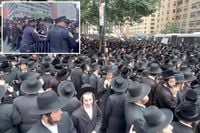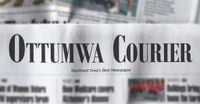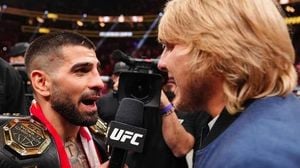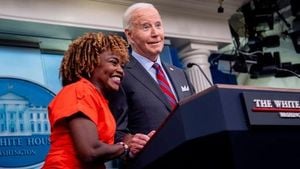On October 19, 2025, the streets of Manhattan became a sea of black hats and banners as thousands of Orthodox and ultra-Orthodox Jews converged near the Israeli consulate, just a block from the United Nations campus. The demonstration, one of the largest of its kind in recent years, was sparked by a controversial shift in Israeli policy: the potential end of a decades-old exemption allowing religious students to avoid compulsory military service.
The protest was not a spontaneous outpouring, but a carefully orchestrated event that brought together two rival factions of the Satmar Hasidic community—the Aronim and the Zaloynim. According to the Associated Press, this marked the first time since 2013 that both Satmar groups united for a joint rally, underscoring the gravity of the issue for their followers. The Central Rabbinical Congress of the U.S.A. and Canada, a consortium representing Orthodox Jewish groups, played a key organizational role.
The roots of the controversy trace back to a ruling by Israel’s Supreme Court in 2024, which ordered the government to begin drafting ultra-Orthodox Jewish men into the military. This decision threatened to end an exemption that had been in place since Israel’s founding in 1948—a compromise born out of the young nation’s desire to accommodate its diverse Jewish population and maintain unity during its earliest, most vulnerable days. For many in Israel, the exemption has long been a source of resentment, with critics arguing it creates an unfair burden on secular and less religious Israelis who are required to serve.
But for the religious communities, especially those in the diaspora, the stakes are deeply personal. As PTI reported, the ultra-Orthodox fear that mandatory military service would disrupt their way of life, pulling young men away from full-time Torah study and threatening the continuity of their religious traditions. The rally in New York was a vivid display of these anxieties, as participants packed sidewalks for blocks, chanting prayers and holding signs defending their right to religious study.
Rabbi Moishe Indig, a prominent Satmar leader, expressed both surprise and concern at the size of the turnout. "I’m not sure organizers expected so many people to show up," he told Associated Press. Still, he felt a growing urgency in the community around the issue. Indig also voiced gratitude for the freedoms afforded to Jews in the United States, saying, "I am appreciative of the governments in New York and the US for giving us the freedom and liberty to be able to live free and have our children go to school and study and learn the Torah." His words echoed through the crowd, a reminder of the contrast between the American and Israeli experiences for many Orthodox Jews.
The demonstration also highlighted the complex relationship between Israel and the large population of very religious Jews in New York and its suburbs. As The Washington Post noted, the rally illustrated how policy decisions in Jerusalem ripple across oceans, stirring passions and divisions in communities thousands of miles away.
Yet not all voices in the broader Jewish community were supportive of the protest. In a pointed interview on the Zev Brenner Radio Show the night before the rally, former New York Assemblyman Dov Hikind lambasted the Satmar organizers for staging such a demonstration at a time when Israel faces existential threats. "Are these people still living in the 1960s?" Hikind asked, as quoted by Brooklyn News. "They receive massive support from the Israeli government—housing, education, welfare—and yet they march against the very country that sustains them. It’s ridiculous."
Hikind’s criticism didn’t stop at the protest’s perceived ingratitude. He warned that such public displays of dissent could embolden Israel’s enemies and fuel antisemitism worldwide. "This kind of event gives Hamas and other terrorists a reason to celebrate," he cautioned. "They see Jews protesting against Israel and use it as propaganda to justify their terrorism. It’s fuel for their hate." He also noted that no other major Chassidic groups—such as Belz, Bobov, or Ger—were supporting the protest, emphasizing that "this is not a mainstream Chassidic position."
For Hikind, the timing of the rally was especially troubling. The protest came on the heels of a ceasefire in Gaza, brokered by former President Donald Trump, after months of intense fighting. With Israel still reeling from the costs of war and facing ongoing security challenges, Hikind argued that the Jewish world should be standing together, not "tearing itself apart." He said, "At a moment when Israel is fighting for its survival, the Jewish world should be standing together—not tearing itself apart."
Despite the criticism, organizers of the protest insisted that their actions were motivated by a deep sense of urgency and principle. They pointed to the Supreme Court’s order as a threat to their religious way of life and argued that peaceful protest is a fundamental right, especially in a city known for its vibrant tradition of public demonstration. The Satmar community, for its part, has a long history of opposing Israeli government policies they see as infringing on religious autonomy, but rarely do both factions join forces so publicly.
The rally’s location—near the Israeli consulate and the United Nations—was no accident. It sent a message not only to Israeli policymakers but also to the world, emphasizing the global dimension of the debate over religious rights and state obligations. As Associated Press reported, the protest illustrated "the complex relationship between Israel and segments of the large population of very religious Jews in New York and its suburbs."
For many secular Israelis, the issue remains contentious. They see the exemption as an outdated relic, incompatible with modern notions of equality and civic duty. The war in Gaza has only deepened these rifts, as calls for national unity clash with demands for fairness and shared sacrifice.
Meanwhile, in New York, the demonstration was as much about local identity as it was about Israeli policy. The Central Rabbinical Congress and Satmar leaders sought to remind their followers—and the broader public—of the importance of religious freedom and the dangers of state overreach. The turnout, far larger than organizers anticipated, reflected a community feeling increasingly under siege, both from changing policies abroad and rising antisemitism at home.
The protest ended peacefully, but the debate it represents is far from over. As Israel grapples with the future of its military draft and the role of religion in public life, the reverberations will continue to be felt in Jewish communities around the world. In the words of Dov Hikind, the challenge now is to find unity in the face of division—a task that, for many, feels as urgent as ever.






